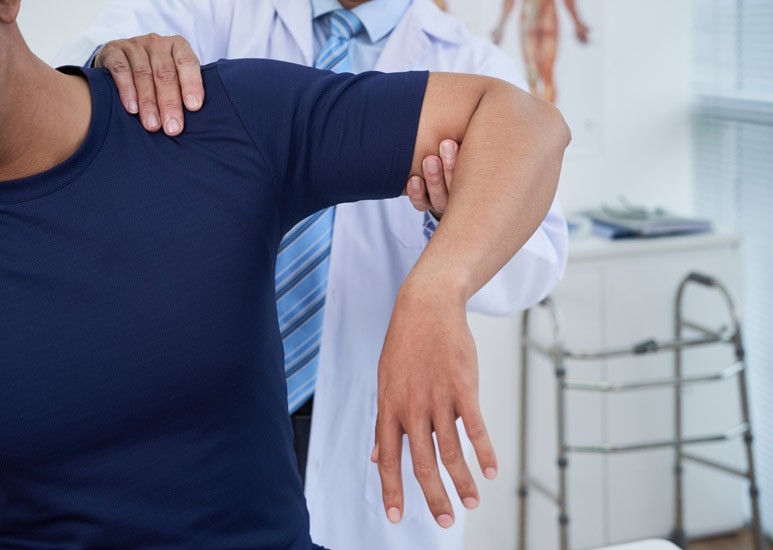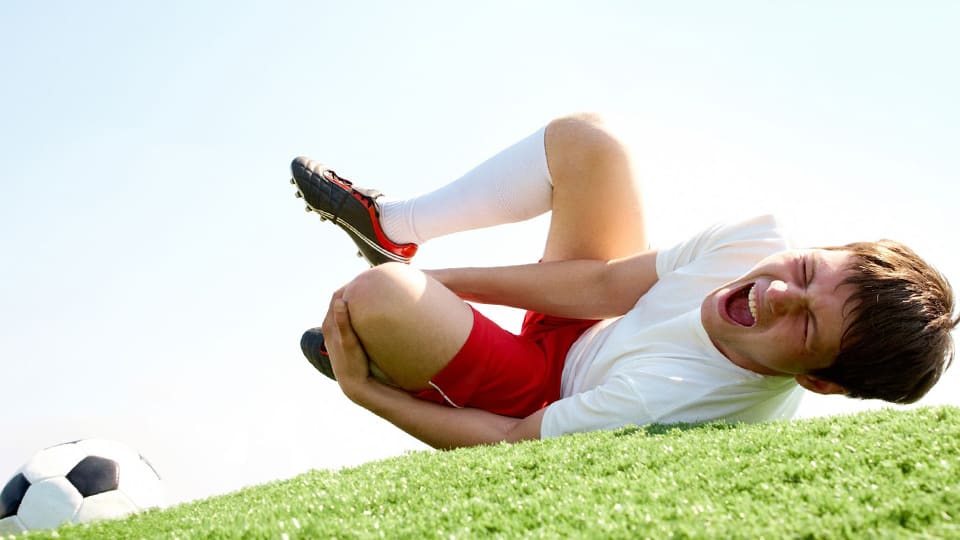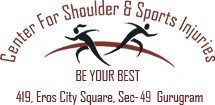Sports injury
Get in touch with our profession & experience sports injury Specialists in South Delhi, Dr. Raman Kant Aggarwal. We provide various treatment for for Shoulder, Elbow, Wrist & Knee. Injuries to the shoulder include sprains and strains. A sprain is ligament injury and a strain is muscle or tendon injury.
Arthroscopic treatment of Sports injuries
Symptoms usually begin suddenly and include sharp pain and swelling in the front of your shoulder. Lifting your arm up overhead against resistance will reproduce the symptoms. In general, sports medicine doctors recommend a program of non-invasive secondary prevention exercise that incorporates a variety of exercises with different loads. This will help prevent future shoulder injuries. At Shoulder Doc We provide verious treatemnt for Arthroscopic treatment of Sports injuries in South Delhi.
Shoulder
The shoulder is a complex joint that is called upon to do many demanding tasks, especially in sports. The muscles, ligaments and cartilage that hold the bones together can be subject to considerable trauma but it is very unlikely that actual cracks or breaks in the shoulder bone will occur (although a fracture of the clavicle which is a small plate on the end of the collarbone is a possibility). It is more likely that the shoulder may dislocate although it is not common for this to happen. This is often treated with injections and physiotherapy but occasionally surgery is required.
Rotator cuff tears, labral injuries and impingement are common problems seen in athletes with overhead arm injuries. In these cases, simple arthroscopic debridement and capsulolabral reconstruction or thermal capsuloraphy can be helpful.
Muscle sprains and strains are usually caused by over-working the muscle or lifting too heavy weights. This results in the muscle fibers stretching or tearing which can be painful and restrict the use of the affected area.

A contusion or bruise is another injury caused by impact to the shoulder and can produce the classic black and blue appearance due to the leaking of blood vessels. It can be very difficult to tell the difference between a normal soreness and pain caused by an injury so it is important not to ignore persistent aches and pains.
Elbow
The elbow is a hinge joint that connects the radius and ulna of your forearm with the humerus of your upper arm. The joint is held in place by ligaments, which act like tethers that keep the bones from moving too much. Sports that require repetitive overhead movements, such as tennis and baseball, can lead to injury of the ulnar collateral ligament of the elbow. The symptoms of this injury include pain in the outer part of your elbow, especially when you make overhead movements; a feeling that your elbow is loose or may slip out of its socket; and a sharp, painful sensation in the area where your biceps tendon runs down the outside of your arm.
The lateral epicondylitis (commonly known as pitcher’s elbow) is an overuse injury to the elbow that causes pain in the area where the tendons of the common extensor muscles meet the lateral humeral epicondyle of your elbow. This injury is very common in sports that involve repeated use of overhead arm movements, such as throwing, and also can occur as a result of impact injuries to the elbow such as falling on an outstretched hand.
If you have severe elbow pain that doesn’t go away after 24 hours, see your doctor or visit A&E for further assessment. You should also seek further medical assistance from a physiotherapist, a sports therapist, or a chiropractor if you are an athlete.
Wrist
Many sports involve high impact, repetitive activities and force that can result in injuries to the bones of the shoulder and elbow. Most problems in the shoulder, however, are caused by injury to ligaments, tendons, and muscles around the joint rather than to the bones themselves. These soft tissue injuries are more common in athletes, due to their frequent and intensive training schedules.
Most commonly, shoulder injuries occur when the ball-shaped bone at the top of your upper arm (humerus) slips out of its normal socket in the shoulder (glenohumeral). This is called a shoulder dislocation. It can damage the cartilage (labrum) lining the shallow socket, and also tear or strain the tendons of your rotator cuff. It can cause severe pain and weakness of the arm when lifted overhead.
The rotator cuff is a group of four muscles and tendons that hold your shoulder blade (scapula) in place. Tears of this group of tendons are more common in sports that require repetitive, explosive movements, such as throwing or climbing. Other causes of a torn rotator cuff include falling onto the shoulder or being struck on the side of the shoulder with a hard object.
A SLAP (superior labral anterior posterior) tear is a rip in the ring of cartilage that lines the shoulder socket. This type of injury is often seen in sports that involve repeated overhead throwing or tackling, and it can produce pain and weakness of the shoulder when lifting the arm across your chest.

Knee
The shoulder is a complex joint, and many different structures can be injured. These include; ACJ (acromio-clavicular) injuries, shoulder joint dislocations, rotator cuff tears, Labral and Biceps tendon tears, bursitis and bone fractures. The shoulder is particularly vulnerable to injury because of the demands placed upon it by sports. Baseball pitchers throw a five-ounce ball hundreds of times a day, swimmers hold their bodies in the water with their arms for long periods, and rugby players and footballers take repeated blows to the shoulders.
A rotator cuff tear can occur in any sport with repetitive overhead arm movements. These can damage the tendons which run round the outside of the shoulder socket, causing pain and weakness. If left untreated, it can lead to a complete tear.
Repeated overhead use of the arm can also cause tiny bony lumps (called spurs) to form in the shoulder. These can irritate and rub against the rotator cuff tendons, leading to a condition called Impingement Syndrome or Supra-spinatus tendonitis. Injections and physiotherapy can improve symptoms, but surgery may be required for persistent problems.
Bone fractures of the shoulder often result from falls onto the shoulder or from hard impacts with other people or objects. They are more common in sports that involve contact and repetitive falling on the shoulder such as tackling or cycling. So consult Dr. Raman Kant Aggarwal for sports injury Specialists in South Delhi
